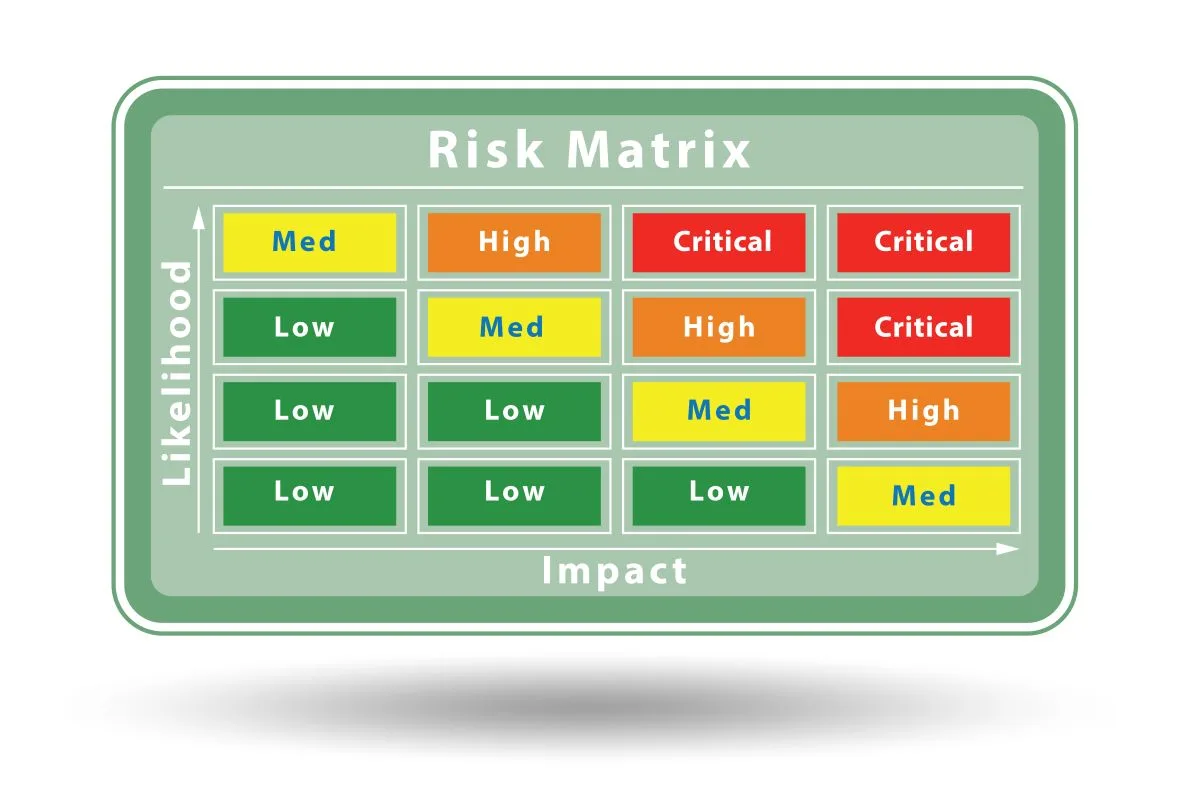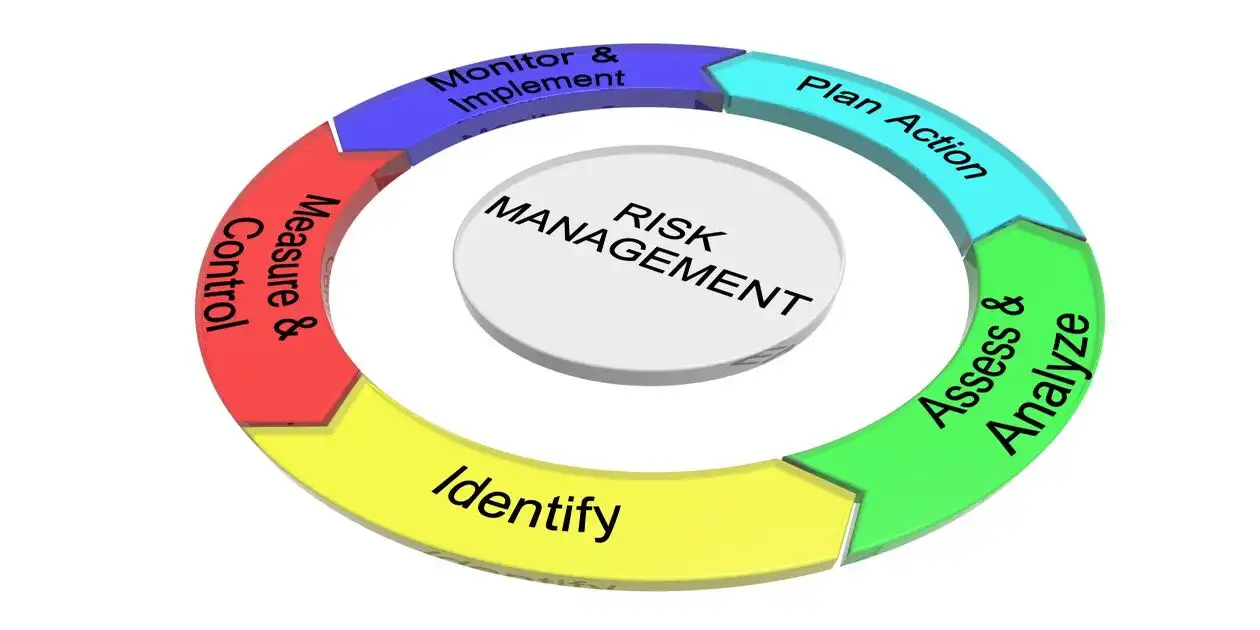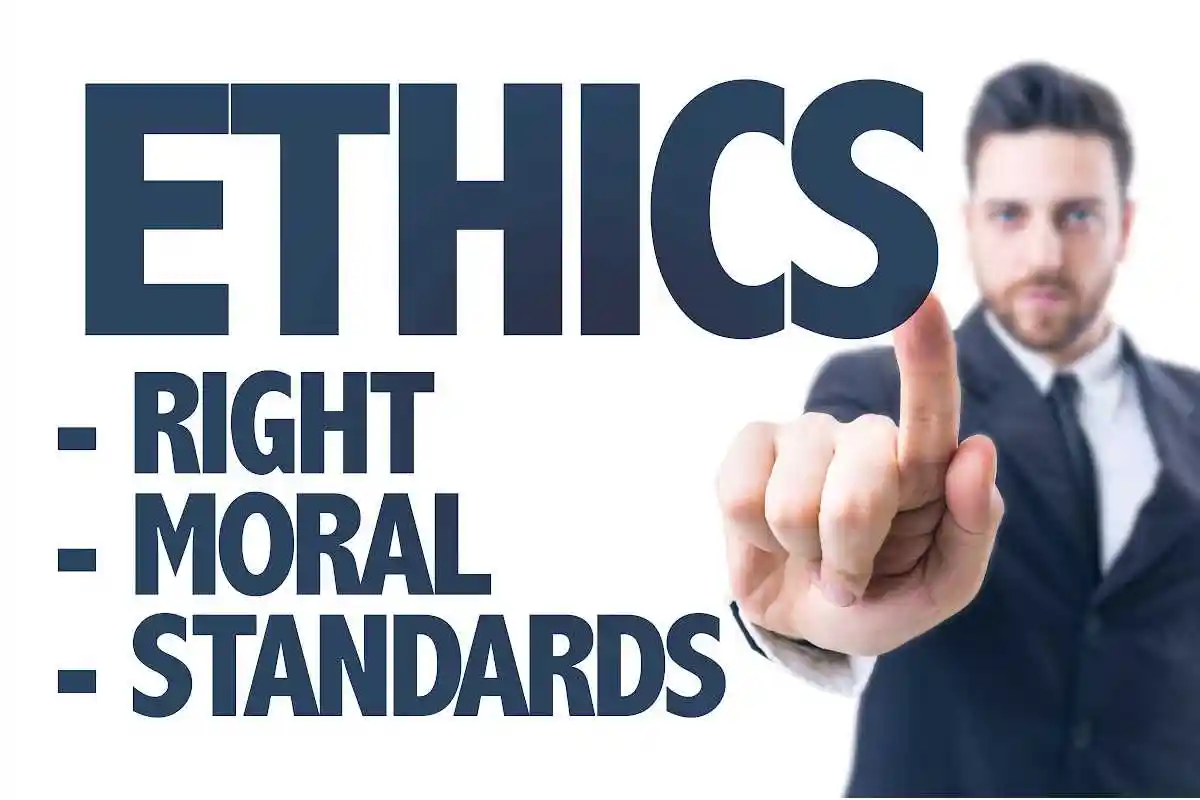What is Fake Revenue Inflation?
- Fake Revenue Inflation: Is the practice of artificially boosting a company’s sales figures to present a more favorable financial position than what actually exists.
- A Deceptive Act: This tactic is often employed by businesses to attract investors, secure loans, or meet performance targets.
- False Illusion of Growth: By inflating revenue, a company can create the illusion of growth and success, masking underlying financial issues.
- Authenticity Is Paramount. When a company engages in fake revenue inflation, it undermines the trust stakeholders have in its operations.
- Reputation and Goodwill: This erosion of trust can have far-reaching consequences, affecting not only the company’s reputation but also the broader market’s perception of its industry and usually results form lack of robust corporate governance and internal controls.
- Reliance of Accurate Financial Statements: Investors, employees, and customers rely on accurate financial reporting to make informed decisions, and any deviation from transparency can lead to significant repercussions.
Critical to Understand:
- Understanding fake revenue inflation is critical for anyone involved in financial decision-making.
- Recognizing the signs of inflated revenue and knowing how to respond can help protect investments and maintain the integrity of financial markets.
- This article addresses the specifics of this unethical practice and its broader implications on financial integrity and securities litigation.
The Mechanics of Overstating Sales
Overstating Sales: One of the most common methods used to inflate revenue figures.
- Overstating Sales: This can be achieved through various techniques, each designed to mislead stakeholders about the company’s financial health.
- Scheme: The basic premise involves recording revenue that does not actually exist or exaggerating actual sales figures to reflect higher income.
Premature Revenue
- One method of overstating sales is by recording premature revenue.
- This occurs when a company records sales before they are actually completed.
- For instance, a company might record revenue from a sale that has not yet been delivered or from a service that has not been rendered.
- This creates a temporary boost in financial statements, misleading stakeholders about the company’s current performance.
Fictions Sales
- Another technique involves creating fictitious sales.
- Companies might fabricate entire transactions, creating phony invoices or falsified contracts to demonstrate non-existent deals.
- This method can be particularly damaging as it systematically distorts financial records, making it challenging for auditors and analysts to detect discrepancies.
- Understanding these mechanisms is crucial for identifying potential red flags in financial statements as it shows a lack of both corporate governance and internal controls.
The Consequences of Fake Revenue Inflation
The Impact: Revenue inflation extends beyond misleading financial statements.
- When discovered, it can lead to severe consequences for the company involved, its stakeholders, and the broader financial ecosystem.
- The immediate impact often includes a loss of investor confidence, leading to a decline in stock prices and market valuation.
Employees: For employees, the discovery of revenue inflation can result in job insecurity, as companies may face financial penalties, legal proceedings, or even bankruptcy. Additionally, the company’s reputation can suffer irreparable damage, making it difficult to attract new talent or retain existing employees. The ripple effects can also impact suppliers and partners who rely on the company’s financial stability.
Regulatory Bodies: Take violations seriously, especially companies lacking basic corporate governance and internal controls over financing, and companies caught inflating revenue may face significant fines and sanctions.
- Legal actions can also ensue, with stakeholders seeking compensation for losses incurred due to misleading financial information.
- These legal and financial repercussions underscore the importance of maintaining transparency and integrity in financial reporting.
Understanding Financial Integrity in Business
Financial Integrity: is the cornerstone of any successful business.
- It encompasses the principles of honesty, transparency, and accountability in financial reporting and decision-making and should be a part of a company’s culture and corporate governance.
- Companies that uphold financial integrity build trust with investors, customers, and regulators, fostering a stable and sustainable business environment.
Maintaining Financial Integrity
Robust Internal Controls: Requires a robust framework of internal controls and corporate governance practices.
- Ensures Compliance: Companies must ensure that their financial statements are accurate, complete, and compliant with relevant accounting standards.
- Motivation: This involves regular audits, both internal and external, to identify and rectify any discrepancies or irregularities in financial reporting.
Common Financial Statement Fraud Schemes
| Scheme Type | Description | Example |
|---|---|---|
| Fictitious Revenue | Recording non-existent sales | Counterfeit sales transactions, Bill and hold arrangements |
| Premature Revenue Recognition | Recording revenue before earned | Accelerating revenue before service delivery |
| Channel Stuffing | Forcing excess inventory to distributors | Shipping excessive product to boost quarterly sales |
| Asset Overstatement | Inflating asset values | Phantom inventory, inadequate depreciation |
| Liability Concealment | Hiding financial obligations | Unrecorded debt, understated warranty liabilities |
| Material Omissions | Withholding critical information | Undisclosed related party transactions |
| Journal Entry Manipulation | Falsifying accounting records | Last-minute entries near reporting deadlines |
Financial Integrity: Is not just a legal obligation but also a strategic advantage.
- Transparent and honest financial practices can enhance a company’s reputation, attract investment, and foster long-term growth.
- By prioritizing integrity, companies can mitigate risks associated with fraudulent activities and build a resilient foundation for future success built on ethics and transparency.
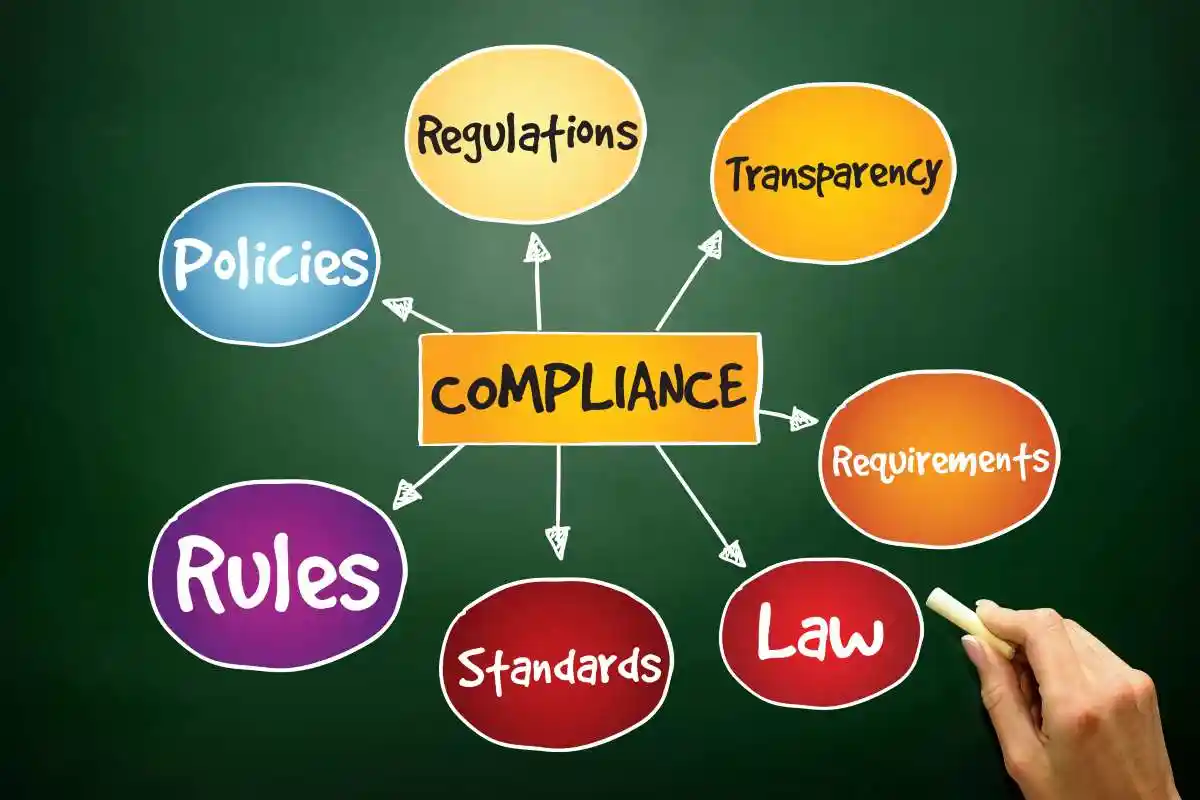
REPUTATIONAL AND FINANCIAL CONSEQUENCES OF FRAUD
Impact Assessment of Financial Statement Fraud
| Impact Category | Measurement | Severity |
|---|---|---|
| Stock Value Loss | 12.3-20.6% average decline | High |
| Reputational Damage | Up to 100x direct financial loss | Severe |
| Employee Impact | 50% loss in cumulative wages | Severe |
| Legal Penalties | $750M+ in major cases | High |
| Bankruptcy Risk | 3x higher than non-fraud firms | High |
| Market Recovery | Years to decades, if ever | Variable |
| Customer Trust | Immediate and often permanent loss | Severe |
| Investment Access | Permanently impaired in many cases | High |
The Role of Securities Litigation in Addressing Fake Revenue
Securities Litigation: Serves as a critical mechanism for addressing cases of fake revenue inflation.
- Legal Avenue: Securities litigation provides a legal avenue for investors and other stakeholders to seek redress when they have been misled by fraudulent financial reporting.
- Securities litigation and Enforcement: Can take various forms, including class-action lawsuits, enforcement actions by regulatory bodies, and arbitration proceedings.

Primary Objective: The primary objective of securities litigation is to hold companies and their executives accountable for fraudulent activities.
- Accountability: Securities litigation causers accountability can deter future misconduct by signaling to other market participants that unethical behavior will be met with legal consequences.
- Compensation: Additionally, securities litigation can result in financial compensation for affected investors, helping to restore some of the losses incurred due to misleading information.
Understanding the Role of Securities Litigation
Understanding the role of securities litigation is vital for both companies and investors.
- Companies: For companies, it underscores the importance of maintaining transparency and compliance with financial regulations.
- Investors For investors, it highlights the need for vigilance and due diligence in assessing the financial health of potential investments. By leveraging securities litigation, stakeholders can help uphold the integrity of financial markets.
THE SECURITIES LITIGATION PROCESS
Filing the Complaint | A lead plaintiff files a lawsuit on behalf of similarly affected shareholders, detailing the allegations against the company. |
Motion to Dismiss | Defendants typically file a motion to dismiss the securities class action lawsuits, arguing that the complaint lacks sufficient claims. |
Discovery | If the motion to dismiss is denied, both parties gather evidence, documents, emails, and witness testimonies. This phase of securities litigation can be extensive. |
Motion for Class Certification | Plaintiffs request that the court to certify the securities litigation as a class action. The court assesses factors like the number of plaintiffs, commonality of claims, typicality of claims, and the adequacy of the proposed class representation. |
Summary Judgment and Trial | Once the class is certified, the parties may file motions for summary judgment. If the securities litigation is not settled, it proceeds to trial, which is rare for securities class actions. |
Settlement Negotiations and Approval | Most securities litigation cases are resolved through settlements, negotiated between the parties, often with the help of a mediator. The court must review and grant preliminary approval to ensure the settlement is fair, adequate, and reasonable. |
Class Notice | If the court grants preliminary approval, notice of the settlement in the securities litigation is sent to all class members in the securities litigation, often by mail, informing them about the terms and how to file a claim. |
| Final Approval Hearing | The court conducts a final hearing to review any objections and grant final approval of the settlement of the securities litigation. |
Claims Administration and Distribution | A court-appointed claims administrator manages the process of sending notices, processing claims from eligible class members, and distributing the settlement funds. The distribution is typically on a pro-rata basis based on recognized losses. |
Case Studies: Notable Examples of Fake Revenue Inflation
Several high-profile cases have highlighted the detrimental effects of fake revenue inflation on companies and their stakeholders. These cases serve as cautionary tales for businesses and investors alike, illustrating the far-reaching consequences of fraudulent financial reporting.
Enron
- The Enron scandal remains the quintessential example of how omissions in financial statements can devastate markets and investors.
- The energy company employed sophisticated accounting fraud schemes, including the use of special purpose entities (SPEs) to hide over $1 billion in debt from its balance sheets.
- These corporate scandals involved deliberate omissions of critical financial information that painted a false picture of the company’s financial health.
- Key Legal Precedents Established:
- Enhanced auditor independence requirements under the Sarbanes-Oxley Act
- Stricter CEO and CFO certification of financial statements
- Whistleblower protection provisions that encouraged internal reporting of fraud
- The securities litigation that followed resulted in one of the largest bankruptcy proceedings in U.S. history, with investors losing approximately $74 billion in market value.
- The case established crucial precedents for regulatory compliance, particularly regarding the disclosure of off-balance-sheet transactions and the independence of external auditors.
Tyco International
- The scandal: Former CEO L. Dennis Kozlowski and CFO Mark Swartz embezzled hundreds of millions of dollars from the company in the early 2000s, using it to fund lavish personal lifestyles. To conceal the theft and maintain the appearance of strong financial performance, they made false and misleading statements to investors.
- The litigation: Kozlowski and Swartz were convicted of grand larceny, securities fraud, and other crimes. Tyco settled shareholder lawsuits for $3 billion, one of the largest securities class action settlements at the time, and its auditor paid an additional $225 million to settle claims.
Under Armour
- The scandal: For several years leading up to 2017, the athletic apparel maker Under Armour used a practice known as “pulling forward” sales from future quarters to meet analysts’ revenue targets. After it became impossible to sustain the practice, the company reported a significant drop in revenue growth in 2017. An SEC investigation revealed that company executives were aware of the practices and misled investors and analysts by attributing revenue growth to other factors.
- The litigation: Following the revelations, Under Armour faced both an SEC enforcement action and a securities class action lawsuit from investors. The company agreed to a $9 million penalty in the SEC case and, in 2024, settled the shareholder suit for a record-setting $434 million.
These cases demonstrate the importance of vigilance in detecting and addressing fake revenue inflation. By learning from past mistakes, companies can implement stronger controls and governance practices to prevent similar issues involving fictitious revenue in the future and avoid securities litigation.
Identifying Fictitious Revenue: Key Indicators
Detecting fictitious revenue requires keen observation and an understanding of common warning signs. Identifying these indicators can help stakeholders assess the reliability of financial statements and make informed decisions about their investments by maintaining robust corporate governance and internal controls over financial reporting.
Key Indicators of Fictitious Revenue:
- Unusual Sales Patterns: Sudden spikes in revenue, particularly without corresponding increases in production or sales activities, can be a red flag for fictitious revenue.
- Complex Transactions: Excessively complicated sales transactions or deals with unusual terms may indicate efforts to disguise fictitious revenue.
- Discrepancies in Cash Flow: A mismatch between reported revenue and cash flow can suggest that sales are not translating into actual cash, indicating potential fictitious revenue.
- Frequent Adjustments: Companies that frequently restate their financial results or make significant adjustments to their accounts may be attempting to correct previous misreporting of fictitious revenue.
By being aware of these indicators, maintaining strong corporate governance and internal controls, investors, analysts, and auditors can better assess the authenticity of a company’s financial statements and identify potential cases of revenue inflation.
Financial Statement Fraud: Key Data Visualizations
| Fraud Type | Frequency (% of Cases) | Median Loss |
|---|---|---|
| Asset Misappropriation | 89% | $120,000 |
| Corruption | 48% | $200,000 |
| Financial Statement Fraud | 5% | $766,000 |
Legal Framework Surrounding Securities Litigation
The legal framework surrounding securities litigation is designed to protect investors and maintain the integrity of financial markets. It comprises a range of laws and regulations that govern financial reporting and provide mechanisms for addressing fraudulent activities.
Key Elements of the Legal Framework:
- Securities Act of 1933: This U.S. law requires companies to register securities offerings and provide accurate information to investors, ensuring transparency in the financial markets.
- Securities Exchange Act of 1934: This act established the Securities and Exchange Commission (SEC) and mandates ongoing disclosure requirements for public companies to prevent fraud.
- Sarbanes-Oxley Act of 2002: Enacted in response to major corporate scandals, this law introduced stricter regulations for financial reporting and corporate governance, including requirements for internal controls and auditor independence. As set forth below it introduced sweeping law on internal controls and executive certifications.
By understanding the legal framework, companies can ensure compliance with regulations and investors can utilize these laws to seek redress in cases of fraudulent financial reporting.
SUMMARY TABLE SARBANES-OXLEY PERTINENT SECTIONS
| (Sec. 101) | Prohibits Board membership from including more than two certified public accountants. |
| (Sec. 302) | instructs the SEC to promulgate requirements that the principal executive officer and principal financial officer certify the following in periodic financial reports: (1) the report does not contain untrue statements or material omissions; (2) the financial statements fairly present, in all material respects, the financial condition and results of operations; and (3) such officers are responsible for internal controls designed to ensure that they receive material information regarding the issuer and consolidated subsidiaries.
Requires such senior corporate officers additionally to certify that they have disclosed to the auditors and audit committee of the board of directors; (1) significant internal control deficiencies; and (2) any fraud that involves staff who have a significant role in the issuer’s internal controls.
States that the rules governing corporate responsibility apply to issuers even if they have reincorporated or transferred their corporate domicile or offices from inside the United States to outside the United States. |
| (Sec. 304) | Requires the chief executive officer and chief financial officer to forfeit certain bonuses and compensation received following an accounting restatement that has been triggered by a violation of securities laws. |
| (Sec. 306) | Prohibits insider trades during pension fund blackout periods if the equity security was acquired in connection with services as either a director, or employment as an executive officer. States that profits realized from such trades shall inure to and be recoverable by the issuer irrespective of the intent of the parties to the transaction. Limits actions to recover profits to two years after the date on which such profits were realized. |
| (Sec. 308) | Allows civil penalties to be added to a disgorgement fund for the benefit of victims of securities violations if such penalties were obtained by the SEC in addition to an order for disgorgement.
Instructs the SEC to report to Congress on previous procedural actions taken to obtain civil penalties or disgorgement in order to identify where such procedures may be used to provide restitution efficiently for injured investors. |
| (Sec. 402) | Prohibits personal loans extended by a corporation to its executives and directors.
Permits certain loans if: (1) made in the ordinary course of the consumer credit business of the issuer; (2) of a type generally made available by the corporation to the public; and (3) made on market terms, or on terms that are no more favorable than those offered to the public.
Permits loans for: (1) home improvement and manufactured homes; (2) consumer credit; (3) an open end credit plan or a charge card; (4) credit extended by a broker or dealer for employee securities trades; and (5) made by an insured depository institution if they are subject to the insider lending restrictions of the Federal Reserve Act. |
| (Sec. 404) | Directs the SEC to require by rule that annual reports include an internal control report which: (1) avers management responsibility for maintaining adequate internal control mechanisms for financial reporting; and (2) evaluates the efficacy of such mechanisms. Requires the public accounting firm responsible for the audit report to attest to and report on the assessment made by the issuer.
|
| (Sec. 406) | Directs the SEC to issue rules requiring an issuer to disclose whether it has adopted a code of ethics for its senior financial officers, including its principal financial officer or principal accounting officer.
|
| (Sec. 408) | Mandates regular, systematic SEC review of periodic disclosures by issuers, including review of an issuer’s financial statement.
|
| (Sec. 806) | Amends Federal criminal law to prohibit a publicly traded company from retaliating against an employee because of any lawful act by the employee to: (1) assist in an investigation of fraud or other conduct by Federal regulators, Congress, or supervisors; or (2) file or participate in a proceeding relating to fraud against shareholders. |

Preventative Measures for Businesses
Preventing fake revenue inflation requires a proactive approach to financial management and corporate governance. Implementing robust internal controls and fostering a culture of ethical behavior can help businesses maintain financial integrity and avoid the pitfalls of fraudulent reporting.
Effective Preventative Measures:
- Strong Internal Controls and Corporate Governance: Develop and enforce comprehensive internal controls and a strong corporate governance framework to ensure accurate financial reporting and prevent unauthorized transactions.
- Regular Audits: Conduct regular internal and external audits to identify and rectify discrepancies in financial statements.
- Ethical Culture: Promote a corporate culture that values integrity, transparency, and accountability at all levels of the organization.
- Training and Education: Provide ongoing training for employees on ethical standards, financial regulations, and the importance of accurate reporting.
By prioritizing these measures, businesses can safeguard against revenue inflation and uphold their reputation for honesty and reliability.
Common Financial Statement Fraud Schemes
| Scheme Type | Description | Example |
|---|---|---|
| Fictitious Revenue | Recording non-existent sales | Counterfeit sales transactions, Bill and hold arrangements |
| Premature Revenue Recognition | Recording revenue before earned | Accelerating revenue before service delivery |
| Channel Stuffing | Forcing excess inventory to distributors | Shipping excessive product to boost quarterly sales |
| Asset Overstatement | Inflating asset values | Phantom inventory, inadequate depreciation |
| Liability Concealment | Hiding financial obligations | Unrecorded debt, understated warranty liabilities |
| Material Omissions | Withholding critical information | Undisclosed related party transactions |
| Journal Entry Manipulation | Falsifying accounting records | Last-minute entries |
Conclusion: Upholding Financial Integrity
Upholding Financial Integrity: Is essential for the health and sustainability of businesses and financial markets.
- As we have explored, fake revenue inflation can have devastating consequences, eroding trust and leading to significant legal and financial repercussions.
- Worse, it shows a company with weak corporate governance and internal controls.
- By understanding the mechanics of revenue inflation, recognizing key warning signs, and implementing preventative measures, companies can protect their stakeholders and maintain a reputation for transparency and honesty.
For investors and analysts, vigilance and due diligence are crucial in assessing the authenticity of financial statements and making informed investment decisions. By leveraging securities litigation, stakeholders can hold companies accountable and contribute to a fair and transparent financial environment.
In closing, maintaining financial integrity is not just a regulatory requirement but a strategic imperative. By fostering a culture of ethical behavior and robust governance, businesses can ensure long-term success and contribute to the resilience of financial markets.
FREQUENTLY ASKED QUESTIONS
What constitutes effective corporate governance?
Corporate governance encompasses the comprehensive framework of rules, practices, and processes that direct and control a corporation. Effective corporate governance balances the interests of stakeholders including shareholders, management, customers, suppliers, financiers, government, and the community. At its core, strong governance requires four fundamental elements: accountability, transparency, fairness, and responsibility. The structure establishes clear decision-making processes, authority limits, and oversight mechanisms designed to create long-term shareholder value while protecting stakeholder interests.
How does board composition impact corporate governance?
Board composition represents a critical determinant of corporate governance effectiveness and directly correlates with corporate performance. Research demonstrates that boards with diverse expertise, backgrounds, and perspectives make superior strategic decisions. A 2023 McKinsey study found that companies in the top quartile for gender diversity on executive teams were 25% more likely to experience above-average profitability.
Effective boards balance industry expertise with functional specialization across finance, technology, marketing, and risk management. Additionally, independence requirements ensure objective oversight—NYSE and NASDAQ mandate that a majority of board members qualify as independent directors without material relationships to the company.
What are the primary fiduciary duties of corporate directors?
Corporate directors operate under two fundamental fiduciary obligations:
- Duty of Care: Requires directors to exercise reasonable diligence and informed judgment when making decisions. Directors must review relevant information, ask probing questions, consult appropriate experts, and document their decision-making processes.
- Duty of Loyalty: Mandates that directors act in the best interest of the corporation and its shareholders, not their personal interests. This duty prohibits self-dealing, usurpation of corporate opportunities, and undisclosed conflicts of interest.
These duties establish the legal foundation for director liability. Delaware courts, which govern most public company jurisprudence, have established the Business Judgment Rule as a presumption that directors acted on an informed basis and in good faith—a presumption that plaintiffs must overcome to establish liability.
What specialized committees typically exist within corporate boards?
Effective boards organize specialized committees to provide focused oversight in critical areas:
- Audit Committee: Oversees financial reporting integrity, internal controls, and external auditor relationships. Sarbanes-Oxley mandates this committee comprise solely independent directors with at least one designated financial expert.
- Compensation Committee: Determines executive compensation structures, incentive plans, and performance metrics. This committee must maintain independence to prevent conflicts in setting executive pay.
- Nominating/Governance Committee: Evaluates board composition, identifies director candidates, establishes governance policies, and conducts board assessments.
- Risk Committee: Increasingly common, particularly in financial institutions, this committee oversees enterprise risk management systems and risk appetite frameworks.
- ESG Committee: Emerging as a dedicated committee to monitor environmental, social, and governance practices as these factors gain investor prominence.
Each committee operates under a formal charter defining its responsibilities, membership requirements, and reporting obligations.
Modern Corporate Governance Challenges
How has ESG oversight transformed board responsibilities?
ESG oversight has fundamentally expanded board responsibilities beyond traditional financial performance metrics. Directors now face increasing accountability for environmental impact, social responsibility, and governance practices. This shift stems from multiple forces: institutional investors like BlackRock and State Street demanding comprehensive ESG strategies, regulators mandating expanded disclosures, and consumers preferring companies with demonstrated sustainability commitments. Boards must now:
- Establish formal ESG oversight mechanisms through dedicated committees or expanded committee charters
- Integrate ESG metrics into executive compensation frameworks
- Ensure robust sustainability reporting aligned with emerging standards like SASB and TCFD
- Develop climate risk assessment and mitigation strategies
- Monitor supply chain ethics and human capital management practices
The SEC’s proposed climate disclosure rules represent one manifestation of this shift, requiring public companies to disclose material climate risks, greenhouse gas emissions, and transition plans.
What role do boards play in cybersecurity risk management?
Cybersecurity risk management has evolved from a technical IT concern into a central board responsibility with significant strategic, financial, and reputational implications. Research indicates that data breaches cost public companies an average of 3.9% in market capitalization, with regulatory fines potentially reaching hundreds of millions of dollars. Effective boards implement structured oversight through:
- Regular briefings from CISOs and independent security experts
- Establishment of cyber risk tolerance thresholds and incident response protocols
- Integration of cybersecurity expertise within board composition
- Review of technology infrastructure investments and security budgets
- Testing of data breach response and business continuity plans
- Monitoring of compliance with evolving regulations like GDPR and CCPA
The SEC’s 2023 cybersecurity disclosure rules now mandate detailed reporting on board cybersecurity expertise and oversight processes, reflecting the elevated importance of this governance function.
How should boards respond to shareholder activism?
Shareholder activism requires strategic board response protocols that balance engagement with maintaining strategic continuity. Activist campaigns have increased 42% since 2020, with approximately 22% of S&P 500 companies facing activist intervention in the past five years. Effective response frameworks include:
- Proactive vulnerability assessments examining performance metrics, governance practices, and capital allocation
- Established response teams comprising directors, executives, legal counsel, and communications advisors
- Clear communication strategies emphasizing ongoing strategic initiatives and performance improvement plans
- Willingness to engage constructively while maintaining confidentiality of sensitive information
- Evaluation of legitimate concerns without automatically adopting defensive postures
- Recognition that most successful activism defenses involve making some changes that address investor concerns
Recent research indicates that companies implementing structured activist response protocols achieve 23% better shareholder returns during activist interventions compared to those with reactive approaches.
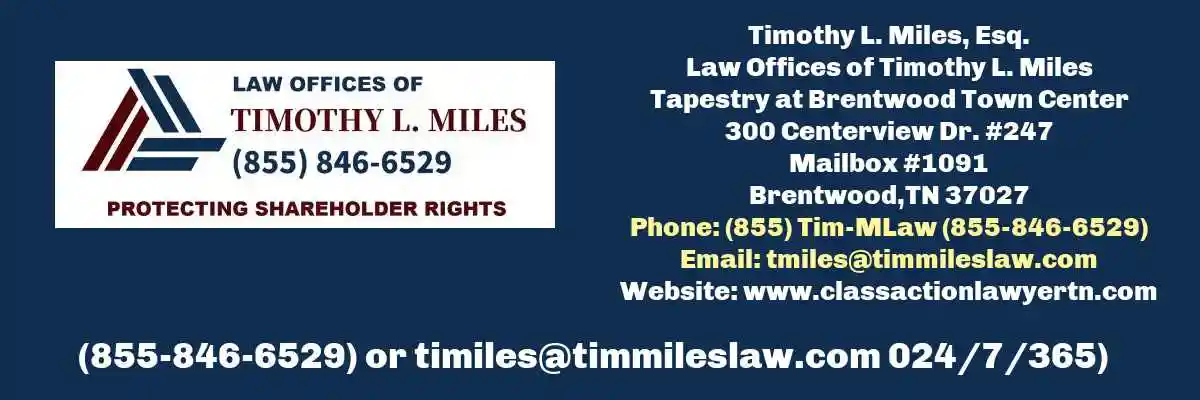
What constitutes effective shareholder engagement practices?
Shareholder engagement has evolved from periodic, reactive communication to systematic, year-round relationship building with institutional and retail investors. Effective engagement practices include:
- Regular communication beyond quarterly earnings calls, including investor days, governance roadshows, and ESG-focused sessions
- Direct board involvement, particularly from lead independent directors, committee chairs, and board chairs
- Transparent disclosure of engagement policies, participation levels, and feedback incorporation
- Systematic processes for soliciting, evaluating, and responding to shareholder proposals
- Off-season engagement focusing on governance practices, board refreshment, and sustainability initiatives
- Multi-channel communication strategies accommodating diverse shareholder preferences
Companies with robust shareholder engagement programs and corporate governance and internal controls demonstrate 14% lower shareholder dissent on “say-on-pay” votes and experience 19% fewer shareholder proposals according to a 2023 analysis by Georgeson.
What are the implications of Delaware corporate law for board governance?
Delaware corporate law establishes the preeminent legal framework governing approximately 65% of Fortune 500 companies and shapes governance practices nationwide. Key principles include:
- The Business Judgment Rule presumption that protects informed, good-faith decisions from judicial second-guessing
- Enhanced scrutiny standards for takeover defenses and change-of-control transactions
- The Caremark doctrine establishing board oversight duties for legal compliance systems
- Section 220 rights enabling shareholders to inspect corporate books and records
- The entire fairness standard requiring both fair dealing and fair price in conflicted transactions
- Multiple statutory protections including exculpation provisions (§102(b)(7)), indemnification rights, and advancement of legal expenses
Recent Delaware decisions have expanded board liability risks in several areas: oversight failures constituting bad faith (Marchand v. Barnhill), director conflicts in controlled transactions (MFW), and information disclosure obligations in shareholder votes (Corwin).
How has SEC regulatory oversight evolved regarding corporate governance and board responsibilities?
SEC regulatory oversight of corporate governance for board functions has intensified substantially, creating new disclosure obligations and compliance requirements. Significant developments include:
- Expanded proxy disclosure requirements detailing board diversity characteristics, skills matrices, and refreshment policies
- Human capital management disclosure mandates covering workforce demographics, compensation practices, and development programs
- Pay-versus-performance disclosure rules requiring detailed analysis of executive compensation relative to financial performance metrics
- Rule 10b5-1 amendments establishing cooling-off periods and certification requirements for executive trading plans
- Regulation S-K modernization requiring principles-based disclosures of material risks and governance practices
- Clawback rules requiring recovery of erroneously awarded incentive compensation following accounting restatements
- Universal proxy card requirements for contested director elections
These evolving requirements necessitate more robust board oversight of disclosure controls and procedures, with particular attention to forward-looking statements and risk factor discussions.
What constitutes board refreshment?
Board refreshment encompasses systematic processes for evaluating, maintaining, and enhancing board composition to ensure continued effectiveness. Best practices include:
- Implementing robust director evaluation frameworks assessing both individual and collective performance
- Establishing clear tenure guidelines balancing institutional knowledge with fresh perspectives
- Developing structured succession planning processes for board leadership positions
- Creating skills matrices mapping current capabilities against strategic needs
- Utilizing independent third-party evaluations to overcome inherent biases
- Implementing diverse candidate slate requirements for director searches
- Establishing onboarding programs ensuring new directors quickly contribute effectively
- Regular assessment of committee composition to match expertise with oversight responsibilities
Progressive boards now disclose refreshment metrics in proxy statements, including average tenure, diversity statistics, and evaluation methodologies. Research indicates boards refreshing at least 25% of directors every five years demonstrate superior financial performance compared to static boards.
How are virtual board meetings transforming governance practices?
Virtual board meetings have evolved from pandemic necessity to strategic governance tool, creating both opportunities and challenges for effective oversight. Research indicates approximately 61% of public companies now employ hybrid meeting models combining in-person and virtual formats. Key considerations include:
- Technology infrastructure requirements ensuring secure, reliable communication
- Modified meeting protocols maximizing engagement in digital environments
- Information security practices protecting confidential board materials
- Revised document retention policies addressing recording practices and transcript creation
- Legal considerations including consent requirements for electronic meetings
- Modified committee structures accommodating digital collaboration
- Impact on corporate governance and board culture and interpersonal dynamics
- Implications for director recruitment given reduced geographic constraints
While virtual formats enhance flexibility and diversity opportunities, evidence suggests certain governance functions—particularly sensitive discussions, CEO evaluations, and strategic planning sessions—benefit from in-person interaction. Leading boards now implement formal policies specifying which matters require physical presence versus those suitable for virtual deliberation.
Conclusion: The Importance of Integrity in Financial Management
Ethics: Integrity in financial management is the cornerstone of trust and credibility in business. As a financial professional, your commitment to ethical financial reporting and transparency is crucial for maintaining the trust of investors, regulators, and stakeholders.
Accurate Financial Statement: By ensuring that all financial statements are accurate and truthful, you contribute to the integrity of financial markets and protect your company from potential legal and financial risks. Upholding the highest standards of financial management is essential for fostering a culture of trust and accountability within your organization.
Transparency and Strong Corporate Governance: Mastering the art of concealing liabilities is not about hiding information but about understanding the importance of transparency and ethical reporting. By committing to integrity in financial management, you ensure the long-term success and sustainability of your organization.
If you are committed to maintaining integrity in financial reporting and wish to learn more about ethical financial practices, consider enrolling in our advanced financial management course. Equip yourself with the knowledge and skills needed to navigate the complexities of financial reporting with confidence.
Contact Timothy L. Miles Today for a Free Case Evaluation
If you suffered substantial losses and wish to serve as lead plaintiff in a securities class action, or have questions about securities class action lawsuits, or just general questions about your rights as a shareholder, please contact attorney Timothy L. Miles of the Law Offices of Timothy L. Miles, at no cost, by calling 855/846-6529 or via e-mail at [email protected]. (24/7/365).
Timothy L. Miles, Esq.
Law Offices of Timothy L. Miles
Tapestry at Brentwood Town Center
300 Centerview Dr. #247
Mailbox #1091
Brentwood,TN 37027
Phone: (855) Tim-MLaw (855-846-6529)
Email: [email protected]
Website: www.classactionlawyertn.com
Facebook Linkedin Pinterest youtube
Visit Our Extensive Investor Hub: Learning for Informed Investors




